RIMS/MARSH Risk Excellence XIII Report
FORECASTING EMERGING RISKS EXPECTED TO INCREASE IN DIFFICULTY; SHIFTS IN CYBER AND REGULATIONS REMAIN TOP CONCERNS: MARSH/RIMS REPORT
New York, April 11, 2016 – Most risk professionals believe that forecasting risk will not get any easier in the next three years, with cyber-attacks and regulation topping the list of areas from which emerging risks will likely arise, according to a new report published jointly today by Marsh, a leading insurance broker and risk advisor, and a wholly-owned subsidiary of Marsh & McLennan Companies, Inc. (NYSE: MMC) and RIMS, the risk management society™.
The 13th annual Excellence in Risk Management report
finds that while risk professionals are increasingly relied upon to identify and assess emerging risks, there remain organizational and other barriers to providing that critical view “around the corner.” Nearly half of survey respondents – 48% -- said that forecasting critical business risks will be more difficult three years from now; with another 26% saying it would be the same.
This year’s Excellence survey sought to better understand how organizations view emerging risks facing their organizations and the tools they use and barriers they face in assessing, modeling, and understanding them. According to the findings, a majority of respondents — 61% — cited cyber-attacks as the likely source of their organization’s next critical risk. This was followed by regulation, cited by 58% of the respondents, and talent availability, cited by 40% of the respondents.
“Whether emerging risks are on your doorstep, around the corner, or on the far horizon, they have the potential to catch organizations unaware,” said Brian Elowe, Marsh’s US client executive leader and co-author of the report. “It’s important for risk professionals to maintain awareness of global risk trends, and to make the connection to their organizations’ business strategy.”
Based on the survey responses and insights from numerous Excellence focus group discussions, it became clear that risk professionals generally agree on the importance of identifying emerging risks, and also that there is no clearly established framework for doing so. More can be done to better identify, assess, and manage the impact emerging risks may have on organizations.
For example, a majority — 60% — of the risk management respondents said they use claims-based reviews as one of the primary means to assess emerging risks, compared to 38% who said they use predictive analytics.
“The widespread use of claims-based reviews means that a majority of organizations are relying on studying past incidents to predict how emerging risks will behave rather than using predictive analytic techniques like stochastic modeling and game theory to help inform their decision making,” Mr. Elowe said.
Survey respondents also cited several barriers to understanding the impact of emerging risks on their business strategy and decisions with lack of cross-organization collaboration ranking first among risk professional respondents.
“Lack of collaboration across the organization is still an issue for many risk professionals. On the other hand, breaking down silos has become less of a concern for executives,” said Carol Fox, vp, strategic initiatives for RIMS and co-author of the report. “Tackling emerging risks often requires creative yet pragmatic approaches. It has to encompass internal cross-functional conversations — formal and informal — around the intersection of risk and strategy, senior-leadership engagement, and tapping into external information sources. Risk professionals are encouraged to broaden the scope and collaboration around emerging risk issues within their organizations.”
The Excellence survey, Emerging Risks: Anticipating Threats and Opportunities Around the Corner, is based on more than 700 responses to an online survey and a series of focus groups with leading risk executives in January and February 2016.
Findings from the survey were released today at the RIMS 2016 Annual Conference & Exhibition. Copies of the survey are available on www.marsh.com and www.rims.org.
About Marsh
Marsh is a global leader in insurance broking and risk management. Marsh helps clients succeed by defining, designing, and delivering innovative industry-specific solutions that help them effectively manage risk. Marsh’s approximately 30,000 colleagues work together to serve clients in more than 130 countries. Marsh is a wholly owned subsidiary of Marsh & McLennan Companies (NYSE: MMC), a global professional services firm offering clients advice and solutions in the areas of risk, strategy, and people. With annual revenue of US$13 billion and approximately 60,000 colleagues worldwide, Marsh & McLennan Companies is also the parent company of Guy Carpenter, a leader in providing risk and reinsurance intermediary services; Mercer, a leader in talent, health, retirement, and investment consulting; and Oliver Wyman, a leader in management consulting. Follow Marsh on Twitter, @MarshGlobal; LinkedIn; Facebook; and YouTube.
